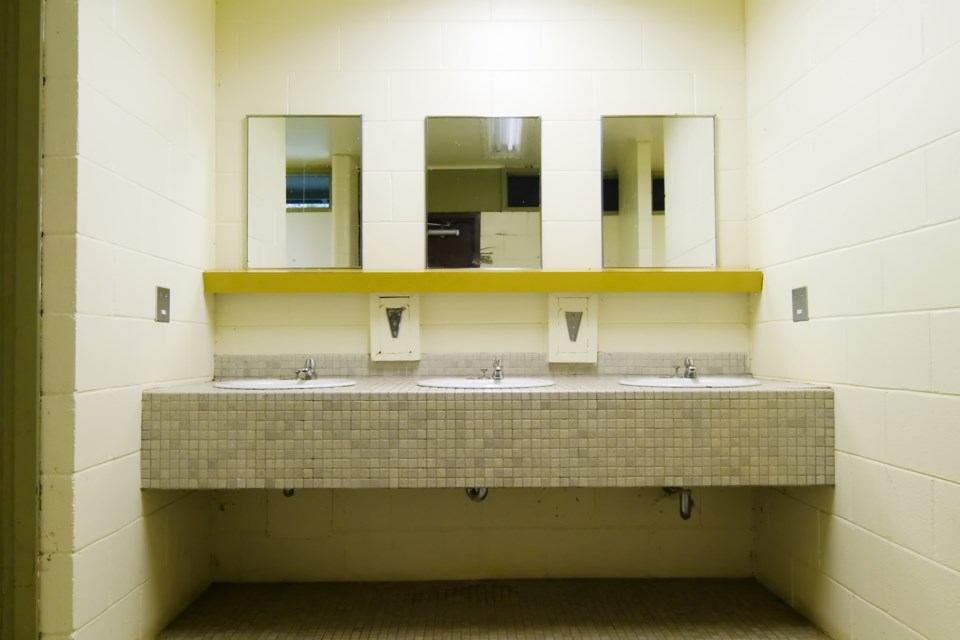On a recent vacation back in my hometown of Kelowna, I wandered into a public restroom on a beach I’d often visited as a kid.
Not to spoil anyone’s lunch, but it hadn’t changed in decades.
The open “waterfall” urinals were still there. (If you’re female, better not to ask. Let’s just say the potential for splatter is increased.) So too the concrete floor and institution-like water taps which only sort of worked.
I’m not a germaphobe. But “grimy” is one way to describe infrastructure that hasn’t changed since I was in elementary school in the 1970s.
That washroom was not the only Kelowna park where public facilities date back to at least the late W.A.C. Bennett era, premier from 1952 to 1972. (I’d guess most Kelowna park washrooms were built in the 1960s.) But the trip back down memory lane to a bathroom at least a half-century old can also be supplemented by other vacation observations.
For example, consider some British Columbia portions of the Trans Canada highway. I travel it several times a year. Every time I marvel that, with a few exceptions, and some laudable improvements in recent years, much of the Trans-Canada is still 1960s-era two lanes between Field and Sicamous.
Some history: The two-lane Trans-Canada highway was completed in 1962. That’s when the Rogers Pass section was officially opened by Prime Minister John Diefenbaker. Back then, Canada’s population was 18.5 million—about half of today. British Columbia’s people-count was under 1.7 million; Alberta’s population less than 1.4 million.
The province and federal government recently announced a $601 million upgrade to the worst portion of the highway just east of Golden. The planned four-lane expansion is a long overdue fix for the most dangerous and torturous twisty two-lane section of that national highway.
But if this was a Swiss highway, they long ago would have expanded all of it to four lanes and bored tunnels through the most dangerous portions. Instead, Canadian drivers must endure a sub-standard national highway and make do with snow sheds and a highway shared with goats. (I’m not kidding: The soon-be four-laned eastern portion of the TransCanada near Golden has a pullout spot where mountain goats regularly appear for the travelling tourists.)
So why the sub-standard bathrooms and decades-overdue work on a major traffic artery?
For one, in general, governments of all stripes have long become captured by special interests, both in the government sector and private sector, which drives up costs. It means the public gets far less bang for their taxpayer buck than they should.
For example, the B.C. NDP government’s so-called “community benefit agreement”—a gift to building trades union allies which demands that workers join trade unions, thus driving up costs of each and every project where the CBA applies.
Thus, in January, Paul de Jong of the Progressive Contractors Association figured that the Pattullo Bridge replacement project will be $100 million more expensive than it should be because of the community benefits agreement. Or as Bob Price detailed back in July, a needed upgrade to the TransCanada highway near Chase has been delayed. Even when it goes forward, the community benefits agreement will have added 35 per cent to the project costs.
Then there is the Kicking Horse Canyon project. Vancouver Sun columnist Vaughn Palmer recently did his usual deep dive into government numbers and argues that the increased cost of the project, $601 million—up from $450 million a few years back—is due in part to the community benefits agreement.
Palmer figures the provincial share of the cost overrun, which he calculates at $128 million, is due in part to the sweetheart deal with the construction trades unions. Palmer pegs the extra CBA cost at 27 per cent of that $128 million.
Beyond provincial government policy that awards monopoly deals to private sector unions, government employees’ unions have long had an uninterrupted lock on delivering many public services. It’s why the Fraser Institute found that on average, and after accounting for education and other factors to arrive at apple-to-apple comparisons, government employees make 7.5 per cent more than equivalent private sector workers. In comparison to private folk, government employees also, on average, retire earlier, have more generous pension plans, and take more paid time off work.
That government employees/private sector differential means provincial government operating costs are higher than they should be. That means taxpayer cash is diverted away from our pockets, and away from extra services or capital projects.
The practical result on the ground is more money spent on government bureaucracy equals less money available for hospital, school, transit and highway construction – or even bathrooms at the local level. Where money is allocated to capital projects, the result is thus less money overall and/or fewer infrastructure projects, delayed upgrades, more debt, higher taxes – or some combination or all the above.
So if you ever wonder why Canadian highways, bridges, and even public bathrooms seem like they’re stuck in the 1960s or 1970s, it’s because they are. And that’s because too many governments—and B.C. is hardly alone—busily cater to special interests in the private and government sector with monopoly-style deals.
The effect shows up on beaches and highways alike.
Mark Milke is an independent public policy analyst. His newest book, The Victim Cult: How the culture of blame hurts everyone and wrecks civilizations, will be released in October.
SWIM ON:
- Previously Mark Milke delved into ICBC, and how to fix it (hint: competition.)
- In one of the very first Orca columns, Peter Shawn Taylor on the effects of ignoring competitive bidding on public projects.
- A different voice, a different point of view: Jody Vance makes an impassioned plea for more investment in Vancouver's public pools.



